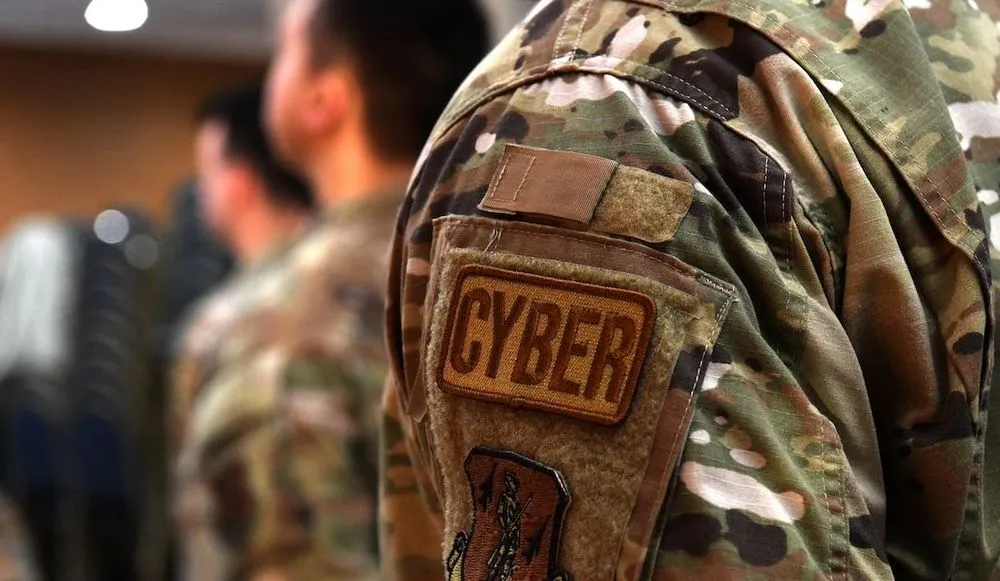Cyber Command, NSA to remain under single leader as officials shelve plan to end 'dual hat'
The Trump administration has abandoned any intention of breaking up the joint leadership of U.S. Cyber Command and the National Security Agency, bowing to the reality of the enormous complexity of the task, according to two people and one current U.S. official familiar with the matter.
The decision to maintain the “dual-hat” leadership for the cyberwarfare and electronic espionage forces appears to have been made without any official White House documentation, such as a presidential memo, these people said. Instead, senior administration officials have quietly accepted that splitting the 15-year-old arrangement would prove too lengthy and arduous while they pursue President Donald Trump’s other national security priorities.
Defense Secretary Pete Hegseth, Director of National Intelligence Tulsi Gabbard and Secretary of State Marco Rubio — who also serves as Trump’s acting national security adviser and previously chaired the Senate Intelligence Committee tasked with overseeing the NSA — have all reached the same conclusion in recent months, said the sources, who spoke on the condition of anonymity to freely discuss the deliberations.
Those leaders believe it would take up to three years to dissolve the arrangement and another three years to fully reassemble the organizations, the sources said. Any decision about eliminating the dual-hat could change, these people cautioned, given the administration’s often unpredictable policymaking processes.
“As of right now, we're maintaining the status quo. But it's something we reserve the right to review,” Hegseth told the Senate Armed Services Committee in June.
“No long-term decisions on these roles have been made,” a White House official told Recorded Future News.
No longer a 2025 project
The Trump administration’s acceptance of the status quo is the latest installment in a debate that has ebbed and flowed since Cyber Command was established in 2010 and marks a reversal for Trump and his allies.
Recorded Future News reported last year that advisers to the president-elect’s transition were eyeing a proposal to end the dual-hat, completing a push Trump attempted in the 11th hour of his first term that ultimately failed. Indeed, the conservative policy blueprint for his second term, known as “Project 2025,” explicitly calls for a split.
A termination would be cheered in some corners of the U.S. clandestine community, as some believe Cyber Command hoards resources from NSA. Others are uncomfortable with a uniformed military officer helming the world’s largest spy agency. And it would delight those who believe the two jobs are too big for one person — a perennial argument against the existing structure.
The arrangement was examined during the Biden administration, the outcome of which found “substantial benefits that present compelling evidence for retaining the existing structure,” according to former Cyber Command and NSA chief Paul Nakasone.
Hegseth previously promised to end the “debate” about the policy. However, Joint Chiefs of Staff Chairman Gen. Dan Caine wrote the relationship should remain in place because it “provides the ability to look across both organizations and has empowered both USCYBERCOM and NSA to fulfill their missions better than each could do alone.”
Earlier this year, Recorded Future News reported that after the unexpected firing of Cyber Command and NSA chief Gen. Timothy Haugh and his civilian deputy at NSA, Wendy Noble, the administration had settled on a course of action to appoint a new No. 2 at the spy agency, then examine the dual-hat.
Once complete, the White House would either nominate a military officer to lead both organizations, if the arrangement was maintained, or cleave the two and select a new Cyber Command leader and the very first civilian head for NSA.
Last month, the administration named Joseph Francescon, a former intelligence analyst, as the next NSA deputy director, responsible for overseeing much of the day-to-day operations at the country’s largest intelligence-gathering agency.
The rest of the previous plan was trashed, in large part because the administration has been pleased with the performance of Army Lt. Gen. William Hartman, according to multiple military and civilian sources with direct knowledge.
Hartman, who has led both Cyber Command and NSA in an acting capacity since Haugh’s firing five months ago, is Trump’s pick to lead both agencies. He previously served as the No. 2 at the command and was the head of the Cyber National Mission Force. He has long-backed the existing leadership setup.
“I’ve continued to see this partnership evolve and our ability to execute increasingly more precise operations is fundamentally because the dual-hat allows me, in my current capacity, to move with the speed and agility and unity of effort that is required,” Hartman told the Senate Armed Services cyber subcommittee in April.
Friction on the Hill
The picks of Francescon and Hartman, who is expected to glide to confirmation, along with opting not to move forward with a breakup for the foreseeable future, should help calm the nerves of policymakers who have been alarmed by Trump’s moves around the command and the agency. Haugh’s firing — for which far-right activist Laura Loomer claimed credit — has been a particularly tense point.
Rep. Don Bacon (R-NE), who chairs the House Armed Services cybersecurity subcommittee, said the administration made a “wise decision” to back off.
“Dual-hat leadership ensures we have ‘unified direction’ for both organizations that must work together to be successful,” Bacon, who served with Haugh in the Air Force, said in a statement.
“Separate commands would create dysfunction and undermine both the missions of NSA and cyber,” he added.
Mike Rounds (R-SD), Bacon’s Senate counterpart, said the current arrangement “enables timely, mission-focused decision making. It also prevents the creation of a silo between the two organizations which would seriously impede mission performance.”
Days after Haugh and Noble’s dismissal, Senate Democrats warned Trump not to separate the dual-hat at a time of growing digital threats from foreign adversaries like China and Russia.
In a statement, Mark Warner of Virginia, the top Democrat on the Intelligence Committee, said “premature termination” of the setup “would risk degrading the speed and effectiveness of NSA and CYBERCOM at a time when their coordination is critical to our national security. As Congress has repeatedly made clear on a bipartisan basis, clear criteria must be met before any separation can even be considered.”
Martin Matishak
is the senior cybersecurity reporter for The Record. Prior to joining Recorded Future News in 2021, he spent more than five years at Politico, where he covered digital and national security developments across Capitol Hill, the Pentagon and the U.S. intelligence community. He previously was a reporter at The Hill, National Journal Group and Inside Washington Publishers.



